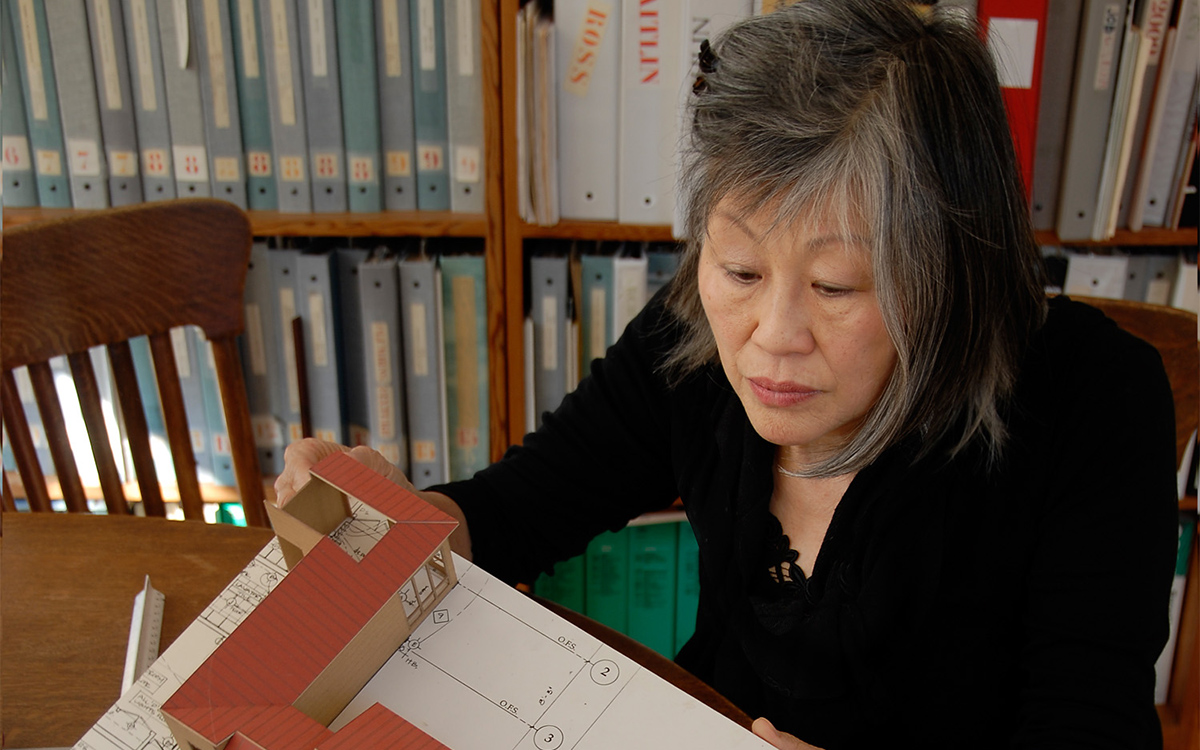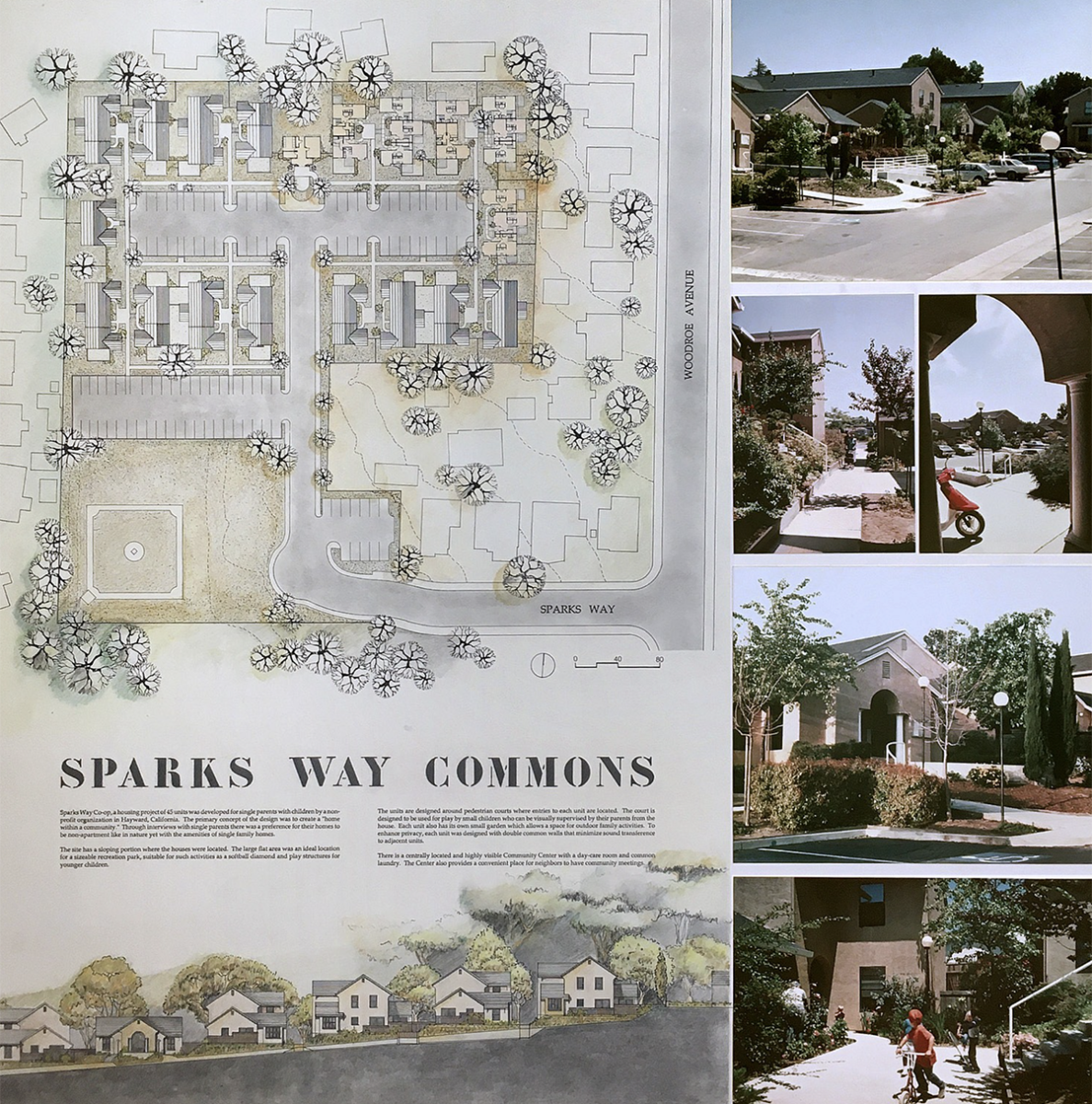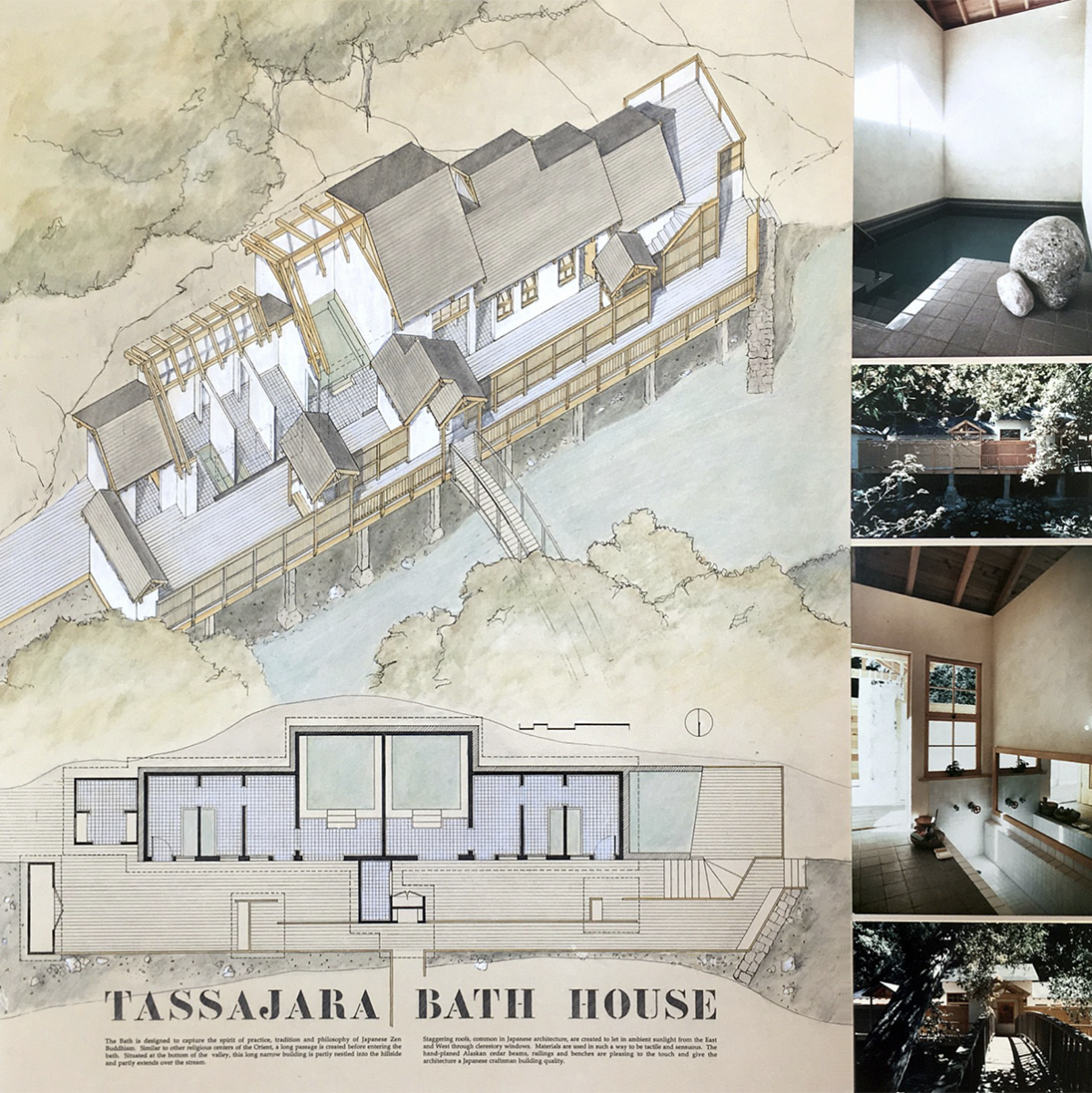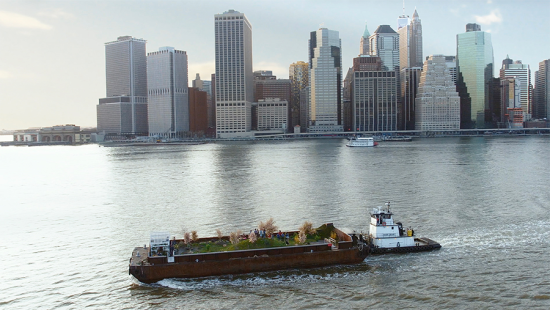Sharing History: The AAP Alumni Archive
According to Cornell AAP alumna Mui Ho (B.Arch.'66), the future of design education and creative practice is rooted in exchanging knowledge and a common understanding of shared histories that connect the past to the present.

Alumna, architect, and educator Mui Ho '62 (B.Arch. '66). photo / provided
Mui Ho '62 (B.Arch. '66), an architect, educator, and deeply engaged member of the AAP alumni community, has spent her decades-long career working between design, community, and higher education. Her approach to architecture practice is rooted in community-oriented design for neighborhoods ranging from the San Francisco Bay Area where she is based to China, where her projects demonstrate respect and appreciation for vernacular traditions. In parallel with design practice, Ho taught for over 30 years in the College of Environmental Design at University of California–Berkeley. Many of the values and priorities that have made her a respected designer and educator guide her contributions to teaching, learning, research, and scholarship at AAP. Throughout her career, she has been a generous supporter of AAP, seeing that the college offers resources for students in need, expanded access to the unique collection held at the Mui Ho Fine Arts Library in Rand Hall, and most recently, a publicly accessible digital collection of the work of select AAP alumni.
The new AAP Alumni Archive is built on Ho's belief in the importance of community connections across time. The new digital repository featuring graduates from programs across the departments of architecture, art, and planning was created as current students began by reaching out to 15 college graduates from the 1940s through the 1980s to hear their stories and gather selections from their life's work. According to Ho, the web-based archive is meant to "rekindle or foster new relationships between alumni and the college" and offer a curated resource of a total of 40 profiles from across the college that expand and advance design education at Cornell while sharing and preserving its history.
"The archive project provided a challenging new opportunity — to look over my body of work from 1968 to the present, and come up with five series. And then, select what I thought were my five best pictures for each. Groupings emerged that made sense but hadn't previously been shown together," says renowned artist Pat Lipsky (B.F.A. '63), one of the first of several alumni to contribute their work and profile. "It turned out to be a wonderful assignment. And, what better place for this review than an archive at Cornell, where I started on the arduous task of becoming myself."
The AAP Alumni Archive launches with the first 15 profiles on the centennial academic year of the college's Department of Art, and the 150th anniversary of the Department of Architecture. A dedicated member of the architecture alumni community, Mui Ho shares her thoughts on the new archive, her architecture and teaching career, and reflections on her time at AAP.
1
After your time at Cornell, you connected practice to pedagogy as you built a career in both higher education and professional design practice. How does the AAP Alumni Archive specifically benefit current students as well as alumni who have gone on to professional careers in architecture, art, and planning?
I think there are many good architectural projects by Cornell alums (beyond the few who are widely recognized) floating around in this country and the world. AAP graduates have gone on to accomplish a lot in their careers, but because their work may not be found in major publications or public archives, there are AAP alumni works that cannot be found after they retire from their practice. With the new digital era, we can archive the projects of our alumni so their work can preserve the history of the college, provide references for students, and offer a tool that can continue to expand design education at Cornell.
Students can benefit enormously from analyzing trends and creative practices, asking why a certain type of design may have been more or less prevalent during certain years, looking at how certain buildings were built in those years, and so on. I believe a shared history will make our college stronger and relevant to all members of the AAP community.
Because projects submitted to the alumni archive will be maintained by the college rather than personal archives or disparate websites that may not be kept up to date, I believe the archive housed at Cornell AAP will attract alumni to submit and therefore honor their life's work by making it more accessible. For those who engage — both current and former students — I hope this archive project will also rekindle or foster new relationships between alumni and those studying at the college today.
 Sparks Way Commons (1984) Hayward, California, by Mui Ho. images / Mui Ho
Sparks Way Commons (1984) Hayward, California, by Mui Ho. images / Mui Ho
2
Looking back, can you pinpoint any personal developments in your education or your career as an architect that were particularly important for you personally?
I found myself well-trained and well-prepared as a designer graduating from Cornell. As a young person, I had a sense of security and the courage to pursue difficult projects and did not shy away from challenges. The challenging projects I took on throughout my career meant that I continued to learn beyond my education.
In my career, I found the involvement of users and communities in the programming phase to be very important. This was new to me, and I learned a lot from working with the community the building was meant to serve. As a result, I now firmly believe that input from clients and users makes better and stronger projects.
 Tassajara Bath House (1983) Tassajara California, by Mui Ho. images / Mui Ho
Tassajara Bath House (1983) Tassajara California, by Mui Ho. images / Mui Ho
3
In your experience, what do you think is most important for students to keep in mind as they enter their profession and continue to build their creative practice?
First and foremost, when looking for work, students should look for firms that share their interests and outlook. An architect shouldn't gauge the success of what they do based on their projects' size, scale, or prominence. This is likely the same for artists and planners though I am somewhat less familiar with those disciplines. Smaller projects can be just as significant and interesting in their design. Since we spend so much of our waking hours in the office, we need to find the right match in firms with a similar design philosophy and values.
As an educator and architect that was once in their place, I think this alumni archive that includes very different projects and practitioners can help students understand that one's contribution to society is very important and can vary widely. And, that being an architect is more than just a job, it is a creative practice and a responsibility.
To view the full programming of our anniversaries click here.







